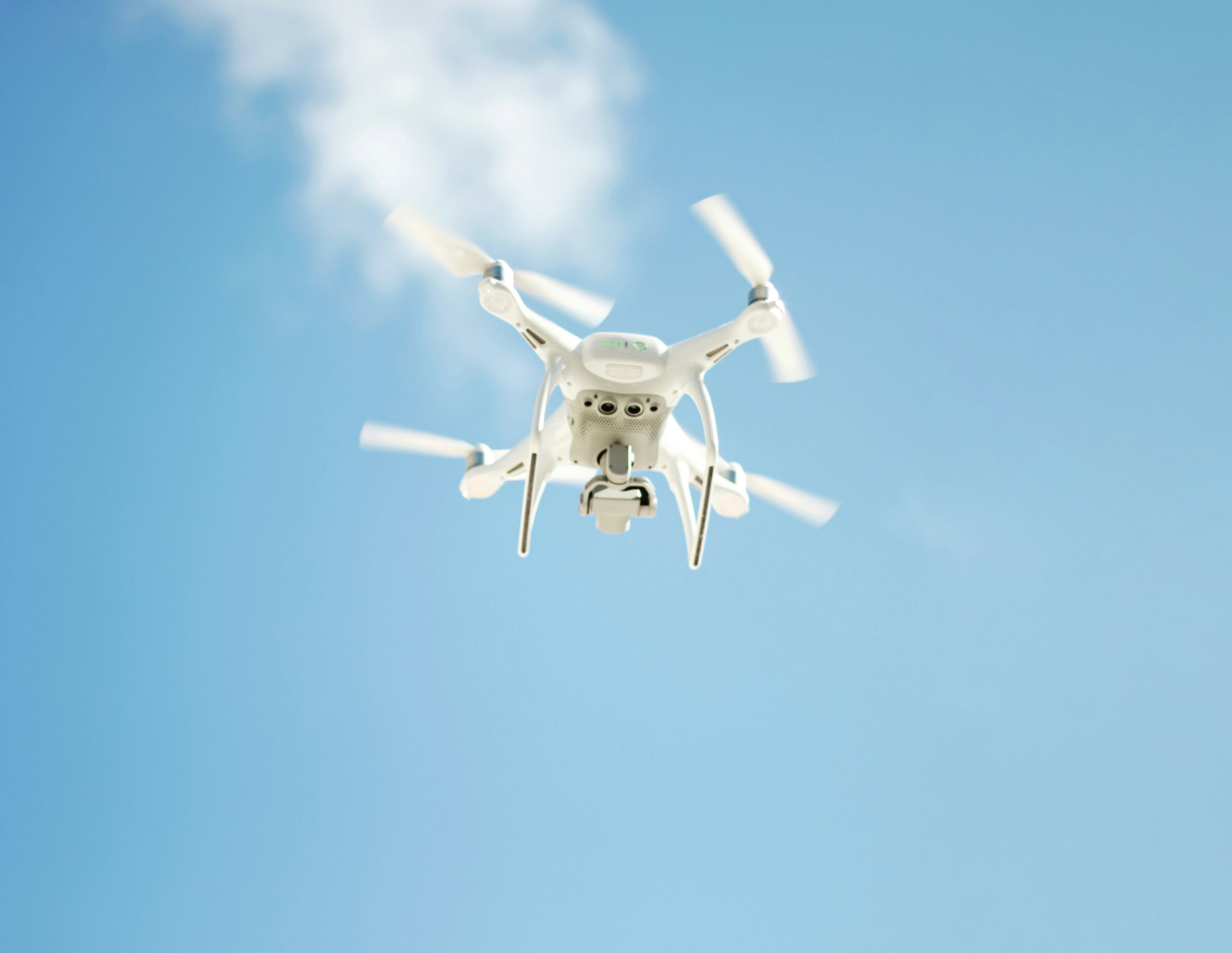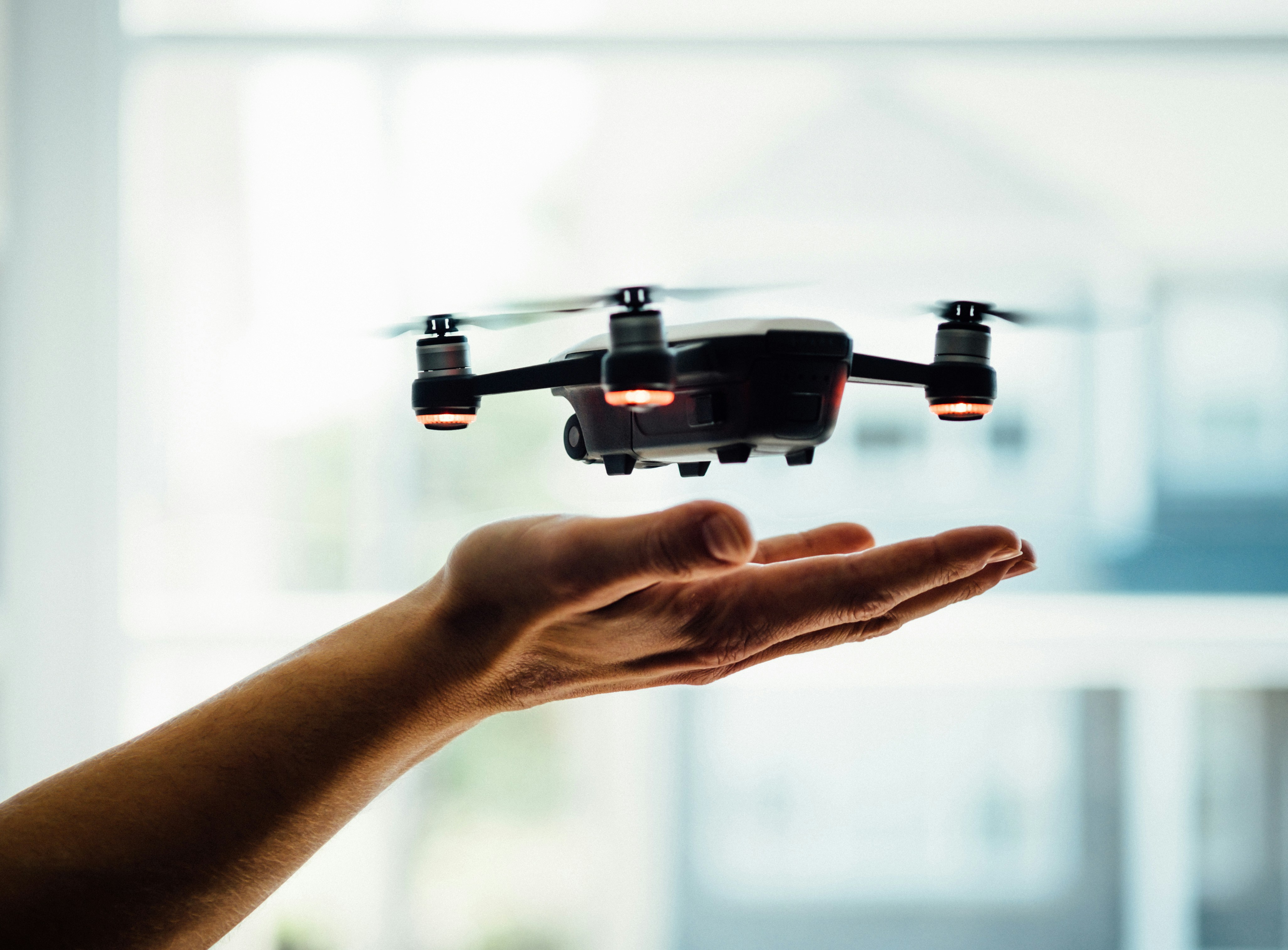
Shadowing and Mentorship in UAV Careers: Gaining Experience Before Your First Full-Time Role
How to Find Mentors, Build Industry Connections, and Develop the Skills Needed in the Rapidly Evolving World of Unmanned Aerial Vehicles
The unmanned aerial vehicle (UAV) industry—also often referred to as the drone sector—is soaring to new heights. Once restricted to military applications, UAVs are now transforming everything from agriculture, construction, and logistics to cinematography, environmental monitoring, and disaster relief. As this technology becomes more advanced and widespread, opportunities abound for those aspiring to design, build, operate, or service drones. Yet for newcomers, landing a role in this dynamic field can be challenging. Employers increasingly seek candidates with practical, real-world expertise, and a broad knowledge base that spans aerodynamics, electronics, software, and regulatory compliance.
That’s where shadowing and mentorship come into play. By learning directly from seasoned UAV professionals—engineers, pilots, data analysts, or regulatory specialists—you gain invaluable insights into daily workflows, best practices, and the subtleties of designing and deploying drone systems in real environments. This in-depth article explores how mentors can fast-track your progress, how to identify potential mentorships (both formal and informal), ways to demonstrate your value as a mentee, and methods for effectively shadowing UAV pros. By the end, you’ll have a clear roadmap to build the skills and connections needed to secure your first full-time role in the UAV industry.
Table of Contents
Introduction: Why Mentorship Matters in UAV Careers
Understanding the Value of Shadowing in Labs, Workshops, and Field Operations
Identifying the Right Mentors and Mentorship Programmes
Establishing Informal Mentoring Relationships
Demonstrating Your Value as a Mentee
Effective Ways to Shadow UAV Professionals
Building Ongoing Relationships and Networking
Measuring Your Progress and Celebrating Milestones
Common Challenges and How to Overcome Them
Conclusion and Next Steps
1. Introduction: Why Mentorship Matters in UAV Careers
Bridging Theory and Hands-On Expertise
Designing and operating drones involves an interdisciplinary mix of aeronautics, robotics, computer vision, electronics, mechanical engineering, software development, and regulatory know-how. While academic programmes or self-study may cover core principles—like aerodynamics, control theory, or embedded systems—mentors with field experience can illuminate real-world considerations. They’ll show you how to manage battery limitations, troubleshoot flight controller calibration, handle payload integration, or adapt flight plans to changing weather conditions, bridging the gap between theory and live operations.
Navigating a Fast-Evolving Field
UAV technologies and regulations constantly evolve. One day you might work on multi-rotor drones for aerial photography; the next, you could be exploring fixed-wing UAVs for precision agriculture or hybrid designs for extended range. Meanwhile, aviation authorities regularly update guidelines for drone flight altitudes, beyond visual line of sight (BVLOS) operations, or data privacy considerations. A mentor helps you stay on top of emerging trends, crucial rule changes, and sought-after skill sets—ensuring your knowledge remains current and marketable.
Cultivating Confidence and Teamwork
Working with UAVs is multifaceted: you need to handle mechanical assemblies, flight planning software, GPS/GNSS modules, and possibly machine learning for object detection. A mentor who’s navigated these complexities can offer tailored guidance, problem-solving tips, and moral support when projects hit snags. Moreover, UAV tasks often involve collaborating with cross-disciplinary teams—like mechanical designers, embedded engineers, GIS specialists, or client-facing project managers. Mentors can share best practices for communicating effectively, managing timelines, and delivering consistent results in challenging field conditions.
Growing Your Professional Network
The drone community is diverse—ranging from start-ups innovating next-gen delivery drones, to public sector organisations mapping forests, to large engineering firms scaling industrial UAV solutions. Mentors frequently have established relationships across this ecosystem. Their personal introductions can grant you invaluable access to job openings, cross-company projects, or conferences. By building rapport with a respected professional, you’ll be better placed to seize opportunities that might otherwise remain hidden.
2. Understanding the Value of Shadowing in Labs, Workshops, and Field Operations
Observing Real-Time Development Cycles
UAVs undergo iterative design and testing: from conceptual sketches to CAD modelling, from 3D-printed prototypes to flight-worthy assemblies, from software integration to final flight checks. Shadowing professionals reveals how tasks are sequenced, how mechanical and electronic subsystems converge, and how flight-control algorithms get tuned. You’ll see how real-world constraints—like cost, weight, or aerodynamic drag—dictate design trade-offs at every step.
Gaining Insight into Workshop and Lab Processes
Many UAV companies or research labs have dedicated spaces for assembling frames, soldering electronics, or integrating autopilots and sensors. Shadowing might include seeing:
Assembly Stations: Soldering motor controllers, calibrating ESCs (electronic speed controllers), or balancing propellers.
Electronics Testbenches: Debugging flight controllers, verifying sensor data streams, or stress-testing communication links.
Calibration Rigs: Checking IMU (Inertial Measurement Unit) performance or barometric sensors, ensuring stable flight in varied conditions.
These experiences highlight how safety protocols, tool usage, and meticulous QA checks ensure each UAV is flight-ready.
Participating in Field Operations
Drones often need to be tested or deployed outdoors—be it farmland, construction zones, or controlled test fields. Through shadowing, you witness:
Pre-Flight Checks: Mission planning, battery health assessment, firmware updates, calibrations, and verifying flight logs.
In-Flight Management: Monitoring telemetry data, assessing real-time video feeds, adjusting flight parameters if unexpected weather or mechanical issues arise.
Post-Flight Review: Downloading flight logs, diagnosing anomalies, evaluating recorded data for client deliverables (like orthomosaic maps or inspection images).
Such field exposure clarifies how UAV operations must adapt to environmental unpredictability, local regulations, or stakeholder requirements—whether it’s capturing high-resolution imagery or safely performing an autonomous mission in restricted airspace.
Understanding Team Collaboration
UAV projects typically involve multiple contributors: hardware designers, embedded software developers, pilot operators, data analysts, and project coordinators. Shadowing illuminates how each role intersects—for instance, how a pilot’s feedback on flight stability can prompt hardware modifications or autopilot parameter tweaks. You’ll see how day-to-day stand-ups, code reviews, or flight debriefs streamline iteration cycles and maintain consistent quality.
3. Identifying the Right Mentors and Mentorship Programmes
Clarify Your UAV Focus
UAV applications are diverse—are you drawn to drone cinematography, agricultural surveying, mapping and GIS, industrial inspections, or drone delivery systems? Perhaps you prefer building flight controllers, designing advanced propulsion systems, or developing computer vision algorithms for autonomy. By pinpointing your niche, you’ll identify mentors with relevant expertise—be it multi-rotor design for aerial photography or fixed-wing drones for large-scale mapping.
Potential Mentor Sources
Professional Platforms: LinkedIn, or niche drone communities on Slack or Discord, let you filter profiles by “Drone Engineer,” “UAV Pilot,” “Aerial Survey Specialist,” “UAV Software Developer,” etc.
Conferences and Workshops: Events like Commercial UAV Expo, AUVSI XPONENTIAL, or local drone meetups offer direct networking opportunities with industry experts. Approach speakers who discuss topics aligning with your interests.
University and Bootcamp Networks: If you’re a student or graduate, your institution may have UAV clubs or research labs. Professors might introduce you to industry partners or alumni working at drone companies.
Industry Groups: Organisations like ARPAS-UK, Drone Industry Insights, or local UAV associations might host mentorship programmes or training sessions.
Online UAV Forums: Websites like DIY Drones, RC Groups, or various UAV subreddits bring enthusiasts and professionals together. Contributors who regularly offer advice or share advanced builds may be open to mentoring relationships.
Evaluating Mentor Suitability
Technical Alignment: If you aim to focus on drone software for real-time navigation, a mentor experienced in flight control algorithms or autonomy is ideal. Conversely, a hardware-centric mentor suits you best if you’re into mechanical frames or power systems.
Availability: UAV pros sometimes handle multiple field projects or R&D deadlines, limiting their time. Confirm they can provide at least periodic guidance.
Mentoring Style: Some mentors thrive on detailed, hands-on feedback; others offer strategic big-picture advice. Reflect on which approach resonates with your learning style.
Track Record: Mentors who’ve supervised interns, run workshops, or published how-to articles often enjoy helping novices gain traction.
Formal Mentorship Programmes
Some drone companies and professional bodies run structured mentorship initiatives, featuring:
Set Timelines: Programmes may last three to six months, with monthly calls or tasks.
Resource Libraries: Mentors share recommended reading, tools, or sample projects for skill-building.
Goal-Driven Curricula: Mentees might tackle a small UAV project, from flight planning to data analysis, culminating in a final review.
Peer Interaction: Group events that connect mentees across various UAV niches, fostering community support and knowledge exchange.
If you prefer scheduled check-ins and structured guidance, these programmes may be ideal. Otherwise, forging an informal mentor-mentee bond can provide flexibility and deeper personalisation.
4. Establishing Informal Mentoring Relationships
Polite, Tailored Outreach
If someone’s UAV projects or online posts captivate you—maybe they developed an innovative drone mapping solution or frequently offer advanced build tips—reach out with a short, specific message. Highlight what you admire about their work and how it aligns with your goals. Politely inquire if they’d be open to a brief chat about their experience and any advice they might share.
Offer Mutual Value
You can often assist mentors, even if you’re new:
Open-Source Drone Software: If they maintain an open-source autopilot or planning tool (e.g., ArduPilot, PX4), volunteer to update documentation, test new features, or fix minor issues.
Research Summaries: Summarise relevant articles or regulatory updates, saving them time.
Data Handling: If they gather flight logs or imagery, you might help analyse or label data.
Such contributions transform the relationship into a partnership rather than a one-sided request.
Stay Flexible and Respectful
UAV professionals may be out in the field for weeks or juggling multiple clients. Be patient if replies are delayed. Send concise, well-structured updates or queries, making it easy for them to respond when they have a window.
5. Demonstrating Your Value as a Mentee
Set Clear Objectives
Are you aiming to master autopilot configuration, perfect your manual piloting skills, or develop advanced computer vision for drone autonomy? Communicate these goals to your mentor from the start, so they can guide your learning path effectively.
Prepare Thoroughly for Each Interaction
Before each mentor call or email exchange:
Review Past Advice: Check if you’ve completed suggested tasks or encountered new issues.
Document Progress: If you tested a new flight controller or developed a custom sensor mount, gather your notes, results, or photos.
Formulate Questions: Focus on specific challenges—like improving flight stability, adjusting PID gains, or selecting a suitable battery for your payload.
Implement Feedback Quickly
If your mentor advises adjusting motor configuration or testing a different mapping software, do it promptly. Record your results—did it resolve the issue or lead to follow-up questions? Reporting back fosters a productive feedback loop.
Acknowledge Achievements and Express Gratitude
When you successfully complete your first stable flight, capture an impressive aerial image, or finish a small design tweak, share it with your mentor. Highlight how their input contributed. This positive reinforcement strengthens rapport and shows you genuinely value their counsel.
6. Effective Ways to Shadow UAV Professionals
Short-Term or One-Day Shadowing
Some UAV companies or labs allow prospective mentees to visit:
Workshop/Lab Tours: Observe assembly jigs, electronics benches, or software integration stations where drones are built and tested.
Flight Tests: See field demos or training sessions. Learn how to plan missions using ground control software, set waypoints, or adjust altitude.
Brief Q&A: Chat with different team members—mechanical designers, pilot operators, data analysts—to see how tasks interconnect.
Make the most of it by researching the organisation’s key products, typical mission profiles, or tech stack. Arrive with relevant questions—like how they handle crash tolerance or manage safety checklists.
Longer-Term Shadowing or Internships
Internships fuse observation with direct participation:
Hands-On Tasks: You might help calibrate sensors, set up flight controllers, or conduct flight tests. Or if you’re software-inclined, assist with coding waypoint logic or integrating new sensors.
Collaboration: Interact with hardware experts, pilot trainers, geospatial analysts, or UI/UX designers, gleaning a well-rounded view of how UAV systems are developed.
Documentation: Contribute to user manuals, flight logs, or training materials, embedding your new knowledge while delivering tangible value.
Keep a daily log of tasks, learnings, and challenges—this helps clarify your progress and can serve as evidence of your experience in interviews.
Field Deployments or Remote Shadowing
Not all UAV work is office-based. If your mentor’s project involves extensive fieldwork:
On-Site Observations: Assist in setting up ground control stations, verifying flight paths, ensuring no-fly zone compliance, or capturing data for later analysis.
Data Post-Processing: If your mentor cannot bring you on-site, they may share recorded flight logs, photos, or telemetry for you to interpret, simulating a portion of the field operation.
Drone Pilot Shadows: Accompany licensed drone pilots during commercial jobs—like roof inspections or agricultural surveys—witnessing how they navigate regulations, client requests, and on-the-fly adjustments.
7. Building Ongoing Relationships and Networking
Stay in Touch Post-Mentorship
Once your formal or informal mentorship ends, maintain contact. Send occasional messages about your new UAV projects, relevant articles you’ve found, or events you plan to attend. A brief, polite update every few months helps you remain on their radar for future referrals or collaborations.
Diversify Your Mentor Base
Some mentors focus on hardware, others on software or regulation. Seeking multiple mentors broadens your perspective. Ensure each mentor understands you’re gathering different insights, not ignoring their counsel—transparency fosters mutual respect.
Attend Industry Events
Conferences like Commercial UAV Expo, InterGeo (for mapping), or local drone meetups provide excellent networking. Volunteering, giving lightning talks, or presenting a poster can showcase your enthusiasm. After sessions, politely approach speakers or attendees to continue the conversation. Exchange contact details and reference specific aspects of their presentations in follow-ups.
Collaborate with Peers
Your fellow interns, drone club members, or hackathon teammates can evolve into professional allies. Working together on open-source drone software, co-developing a flight control module, or forming small local projects fosters a supportive peer network that complements your mentorship relationships.
8. Measuring Your Progress and Celebrating Milestones
Define SMART Goals
Establish Specific, Measurable, Achievable, Relevant, and Time-bound objectives. Examples might include:
Hardware Assembly Mastery: Build and successfully test-fly a custom multi-rotor platform within three months, documenting the process in a short build guide.
Autopilot Knowledge: Master a chosen flight controller (e.g., Pixhawk or Betaflight) and tune a stable PID configuration by the end of a six-week project.
Regulatory Competence: Study and pass the UK’s specific drone pilot exam or achieve an operational authorisation to handle commercial flights within four months.
Data Processing Proficiency: Implement an end-to-end photogrammetry workflow (flight planning, image capture, orthomosaic generation) for a sample site within two months.
Conduct Periodic Reviews
Schedule monthly or quarterly check-ins (even if informal) to share achievements with your mentor, re-evaluate goal timelines, and address any new blockages. Adjust your plan based on their feedback or shifting industry trends.
Maintain a Skill Log
Keep a journal or spreadsheet listing each UAV-related technique you learn—like calibrating an IMU, implementing waypoint navigation scripts, or performing payload integration. Update it periodically, forming a tangible record of your expanding competence. This proves invaluable during job applications or interviews.
Recognise and Document Accomplishments
Did you successfully pilot a drone in windy conditions, integrate a LiDAR sensor, or produce high-accuracy terrain maps? Congratulate yourself and note the details—like which sensor library you used or what safety checks were crucial. Sharing these stories publicly—on LinkedIn or a personal blog—can also pique employers’ interest.
9. Common Challenges and How to Overcome Them
Access to Flight Areas or Hardware
Operating UAVs typically requires suitable airspace and hardware. Equipment can be expensive, and local flight regulations might restrict usage.
Solution: Start with budget-friendly kits or simulators. Some universities or clubs have shared equipment. Explore designated drone practice zones or approach local farmland owners if you need open spaces (with permission and legal compliance).
Busy or Inaccessible Mentors
Seasoned drone experts might juggle field deployments, client demos, or product development cycles, leaving limited mentoring time.
Solution: Communicate concisely via Slack, email, or short calls. Offer flexible scheduling and respect their travel/mission schedules. Provide succinct updates or queries so they can respond efficiently.
Conflicting Advice
Multiple mentors or experienced UAV folks may suggest different flight control strategies or payload configurations.
Solution: Realise different use cases (cinematic vs. mapping vs. racing drones) have unique solutions. Test each approach, see which fits your mission, and adopt a blend if needed. Develop your own informed perspective over time.
Overcoming Imposter Syndrome
UAVs are highly interdisciplinary and can feel overwhelming—especially if you’re new to mechanical, electrical, or aviation components.
Solution: Tackle incremental tasks (e.g., building a small drone, coding a simple flight path). Celebrate micro-successes. Rely on mentor encouragement. Understand that mastery is a step-by-step journey and even experts started from scratch.
10. Conclusion and Next Steps
Shadowing and mentorship are potent vehicles for transitioning from theoretical UAV knowledge to practical, market-ready skills. By observing how real professionals design and deploy drones, you absorb critical insights into hardware, software, regulations, and multi-disciplinary teamwork. Meanwhile, forging a close bond with a mentor accelerates your learning curve, provides moral support, and connects you to a broader network of drone specialists.
Concrete Action Steps
Pinpoint Your UAV Niche: Choose a subfield (aerial mapping, cinematography, autonomy, agriculture, logistics) reflecting your interests and skillset.
Seek Mentors Actively: Use LinkedIn, drone events, or university networks to find professionals who match your goals. Tailor your outreach and mention specific parts of their work you admire.
Be a Committed Mentee: Clarify objectives, prepare for each interaction, act on feedback, and celebrate each step.
Shadow with Purpose: Whether short visits or extended internships, immerse yourself in real workshop setups, flight tests, or data analysis workflows. Document your observations in detail.
Grow Your Network: Keep in touch post-mentorship, expand to multiple mentors for diverse knowledge, and collaborate with peers on small drone projects or open-source initiatives.
Track and Reflect: Set SMART goals, maintain a skills inventory, and evaluate achievements regularly to stay motivated and structured.
Embrace Challenges: Overcome hardware limitations, busy mentor schedules, or conflicting advice with creativity, patience, and a problem-solving mindset.
Ready to Launch Your UAV Career?
If you’re primed to apply mentorship-driven expertise and secure your first full-time UAV role in the UK—be it drone design, pilot operations, or advanced software integration—www.uavjobs.co.uk is your go-to resource. Our platform features the latest vacancies in commercial drone services, aerospace R&D, robotics start-ups, and beyond, connecting you with employers ready to harness new talent.
By continuously learning, experimenting with real-world drone solutions, and building relationships within this fast-evolving domain, you’ll position yourself as a rising UAV professional. Embrace the journey, lean on mentors for support, and soon you’ll be contributing to the next wave of drone innovations that reshape industries and societies worldwide. Good luck!


